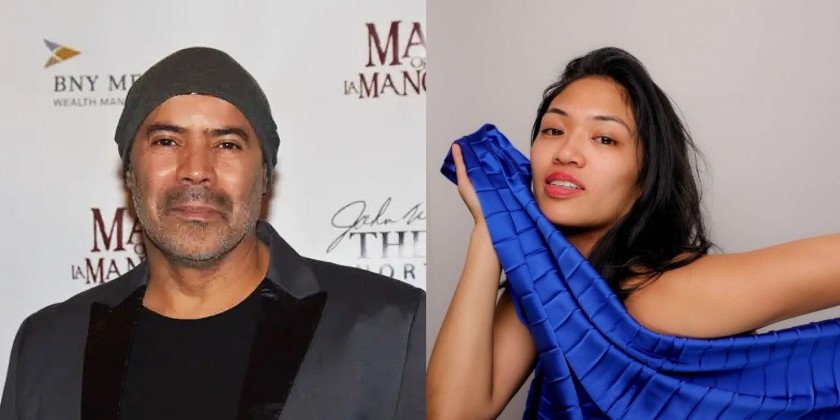IMPRESSIONS: Kyle Abraham's “Dear Lord, Make Me Beautiful” at Park Avenue Armory

Direction and Choreography: Kyle Abraham
Composition: yMusic | Visual Design: Cao Yuxi (JAMES)
Lighting Design: Dan Scully | Costume Design: Karen Young //Sound Design: Sam Crawford
Rehearsal Direction: Jessica Tong | Associate Visual Design: Jintong Yang, Yuke Ding
Associate Lighting Design: Dan Stearns | Associate Costume Design: Dianela Gil
Dancers: Kyle Abraham, Jamaal Bowman, Amari Frazier, Mykiah Goree, Tamisha Guy, Alysia Johnson, Catherine Kirk, Faith Mondesire, Riley O’Flynn, William Okajima, Morgan Olschewsche, Jai Perez, Donovan Reed, Keturah Stephen, Stephanie Terasaki, Gianna Theodore, and Olivia Wang
yMusic: Alex Sopp (Flutes, Voice), Mark Dover (Clarinets), CJ Camerieri (Trumpet, French Horn), Rob Moose (Violin, Guitar), Nadia Sirota (Viola), Gabriel Cabezas (Cello)
Kyle Abraham’s “Dear Lord, Make Me Beautiful” is, in a word, beautiful.
“Beautiful” is not a word I use. In fact, I’m mildly allergic to it, in writing as much as in conversation. “Beautiful” often strikes me as hollow, even a bit lazy, like I’m always left wanting to know more. It’s a word as subjective as it is imprecise, at once vacuous yet full of mystery: is “beautiful” an impression of surface or an expression of feeling? Or is it simply a placeholder for something otherwise inarticulable?

This impatience with the “beautiful” haunted me as I witnessed and absorbed Abraham’s creation, which, beyond the prayerful plea of its title, is almost paralyzingly beautiful. The work’s movement, music, and design are of a piece: quietly articulate dancing by Abraham and a strong ensemble twines organically with a delicately lush live score by chamber group yMusic; a shifting mosaic of pointillist video projections by Cao Yuxi (JAMES) floods the stage with color, mood, and imagery, absorbed and reflected by Karen Young’s diaphanous costumes that glow in Dan Scully’s sensitive lighting. A deluge of “beautiful,” thoughtfully composed and rendered— the real world feels shockingly bleak after 70 minutes enveloped and submerged in so much “beautiful.”

Within this container of the “beautiful,” dynamics vary, but only so much. The group evokes forested stands, vibrant flurries, tidal rushes, and fields of repose against which brief solos and intimate encounters emerge and dissolve; a running motif evokes the passage of time. Abraham deploys his signature hybrid movement language, full of slicing arms, singing lines, supple spines, rolling shoulders, lilting jumps, and heart-baring arabesques; the dancers move and touch with empathic tenderness, though interiorities only occasionally break the surface. yMusic’s birdlike flutes float over pulsating strings; plaintive horns, curious woodwinds, and wordless vocals splash and glimmer on a tittering undercurrent; exquisite cacophonies surge and dissolve; moments of restful silence fill with breath. Saturated spills of floral and arboreal hues dapple backdrop and floor, giving way to wintry blues and fields of snowy white; a moment of bright blankness shocks and refreshes in its clarity. The range is textured yet circumscribed: highs are beautiful, lows are beautiful, joy and sorrow and longing are beautiful; the sought-after “beautiful” becomes all-encompassing, relentless, inescapable. The work’s arc is less narrative—there is no singular climactic statement—and more ecological, gesturing toward a cycle of seasons: life and nature resonating together.

In a program note, Abraham attests to the deeply personal nature of the work, yet much of it seems to unfold at an introspective remove on a scale at once intimate and grand. The dancers exude velvety tension and earnest commitment, but who are they? The smooth abstraction — the “beautiful” of it all — dulls the shine and reach of their efforts. The exception is the work’s opening: Abraham bursts onto the empty stage at a full run, arms trailing loosely behind him, a wide smile of exhilaration beaming from his open face. As he runs continuous circles around the lush green expanse, the sense of abandon in his long, exuberant strides fades, at first almost imperceptibly. Ever so gradually, he organizes himself into an athletic jog, his form falling into pumping arms and measured paces, his face closed to neutral, his gaze shortened. Stride unbroken, he fades still more, his gait slowed by a palpable stiffening of joints. And yet his form carries vestiges of childlike abandon, of youthful athleticism; his gaze shifts and pans through space, remembering, or wanting to remember. He has aged before our eyes: a body’s journey through the seasons of life in a few laps around a stage. At once simple and virtuosic, this opening statement nearly says it all — the rest is beautiful dancing.
For Abraham and his collaborators, “Dear Lord, Make Me Beautiful's" prayer is generously answered, but what does its “beautiful” leave out?















